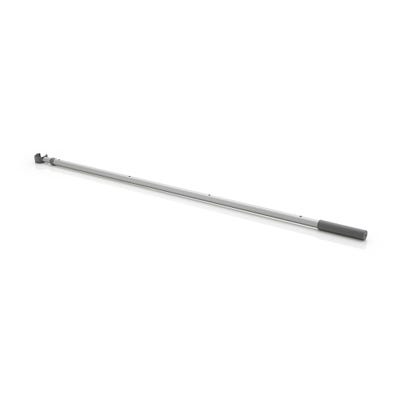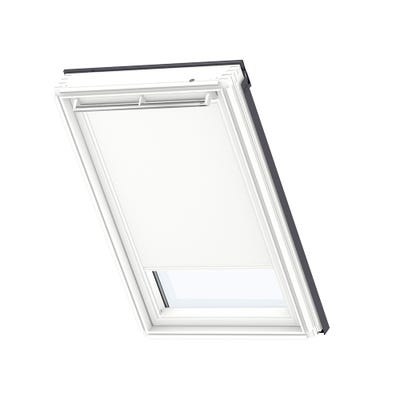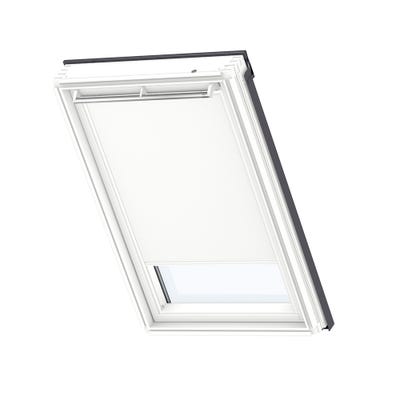Window Blinds & Accessories
Discover practical and stylish window blinds and accessories at Builder Depot. Our range includes white blackout blinds compatible with VELUX roof windows, helping you block out light, reduce glare, and improve comfort in bedrooms, lofts, and attic conversions. Blinds can also help regulate room temperature, reduce energy costs, and offer extra privacy, making them a smart choice for any home. For added convenience, we stock a telescopic rod, ideal for adjusting blinds fitted in hard-to-reach roof windows. So, if you're looking for easy-to-install window roller blinds, we've made it simple to upgrade your space.
Read More Read LessWhat are window blinds?
Window blinds are window coverings made from adjustable slats or fabric panels. They are used for controlling light, enhancing privacy, and improving insulation in rooms.
Understanding the differences between blind types, how they fit into various window structures, and what level of blackout or thermal control they offer is key to making an informed choice.
Types of window blinds
Window blinds come in various formats, each with different benefits depending on where and how they are installed. Common types include roller blinds, venetian blinds, vertical blinds, day and night blinds, and roman or wooden styles.
- Roller blinds: Made of fabric that wraps around a central tube and are often used in kitchens and bathrooms because of their compact design and ease of cleaning.
- Venetian blinds: Consist of horizontal slats that can be tilted to control light or lifted for a clear view, and they’re popular in living rooms and offices.
- Vertical blinds: Operate using upright fabric panels and are often chosen for patio doors or large windows due to their wide coverage.
- Day and night blinds: Feature alternating sheer and solid sections, allowing for flexible light control but do not provide complete blackout.
- Roman blinds: Fold into soft pleats and offer a more decorative option. They usually come in a printed fabric.
- Wooden blinds: Add visual warmth and texture to a space. These blinds are commonly supplied in white or natural wooden shades.
- Blackout window blinds: Specifically designed to block out as much incoming light as possible. Commonly used in bedrooms, nurseries, and media rooms where full darkness is required for sleep, privacy, or screen visibility. These blinds have a specialised backing or opaque fabric that prevents light from passing through. Many include a thermal layer that helps regulate temperature, making them suitable for both winter insulation and summer shading.
Blackout blinds for roof windows
Roof windows, such as those installed in loft conversions, can present unique challenges when it comes to controlling light and temperature. In these cases, standard blinds are often unsuitable due to the angle and height of the window.
At Builder Depot, we specifically stock blackout blinds for roof windows. These options are compatible with particular window ranges, and include a secure fitting mechanism to prevent sagging or movement.
How to measure a window for blinds
Accurate measurements are essential when installing window blinds to ensure a good fit, effective light control, and a neat appearance. The process starts by deciding if the blinds will be fitted inside the window recess or mounted outside on the wall or frame.
To measure for inside recess fitting, take the width and drop of the window in three places each on the top, middle, and bottom. Then use the smallest measurements to ensure the blind won’t rub against the sides.
For outside recess blinds, decide how much you want the blind to overlap the window edges. Typically, adding 7 to 10cm on each side will improve blackout coverage. This is especially important when installing blackout window blinds, as light leakage around the edges is common with internal fits.
For bay window blinds, measure each panel separately, being mindful of any inward angles or window handles that might affect the placement of brackets or rails. Always use a tape measure for consistency and avoid making assumptions about symmetry, as many windows are not perfectly square.
Installing blackout blinds
Installing blackout blinds properly is key to achieving full light exclusion and making sure the blinds operate as intended. For most roller blackout blinds, start by marking the bracket positions using a spirit level to ensure alignment. Fix the brackets securely using appropriate screws and wall plugs, especially if mounting to plasterboard or masonry.
Once the brackets are in place, the blind cassette or roller mechanism is clipped in, and the fabric can be lowered to test alignment and coverage.
How to fit blackout blinds will vary slightly depending on the type. Some clip into pre-fitted side channels for better light control, while others are free-hanging. In bay windows, fitting can be more complex due to angled walls and multiple frames. One option is to use separate blinds for each window segment, ensuring brackets are spaced to avoid interference when blinds are raised or lowered.
For those installing blackout blinds without drilling, stick-on options or blinds with tension rods can offer temporary or renter-friendly alternatives, although they may not provide the same level of light blocking.
How to clean window blinds
Cleaning window blinds regularly helps maintain their appearance and functionality, especially in areas like kitchens, bathrooms, or near windows exposed to moisture and dust. The best method depends on the type of blind.
- Venetian blinds can be cleaned by tilting the slats flat and wiping them down with a damp cloth or a specialist blind cleaner.
- Roller blinds, including blackout versions, should be dusted regularly and wiped gently with a damp cloth, taking care not to scrub or crease the fabric.
Window blind maintenance also involves checking the operating mechanisms. Chains, cords, and wands should move freely. If they become stiff, they can be lightly lubricated or replaced.
How to get creases out of blackout blinds is another common concern. Creasing often occurs during shipping or storage. To smooth out creases, hang the blind fully extended in a warm room for several days. If needed, a low-heat steam from a distance may help, but direct contact should be avoided to prevent damage.



